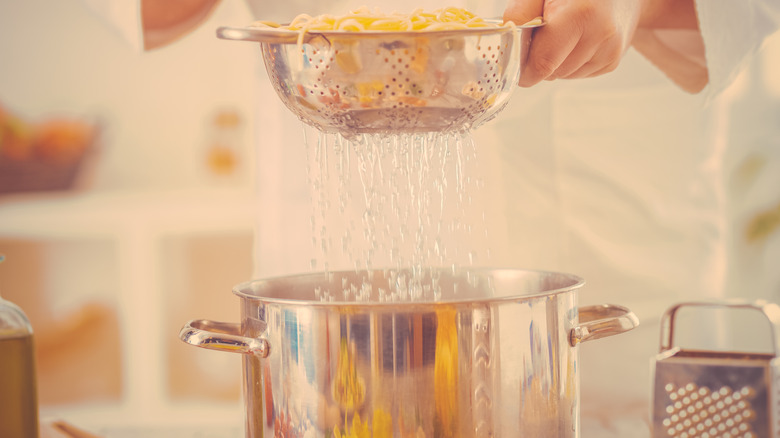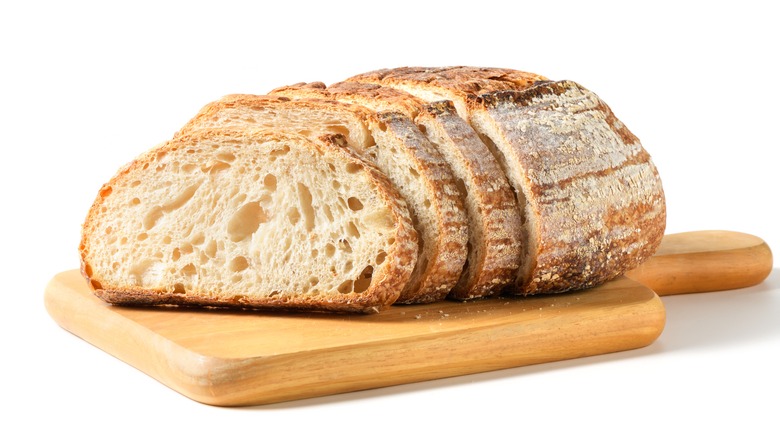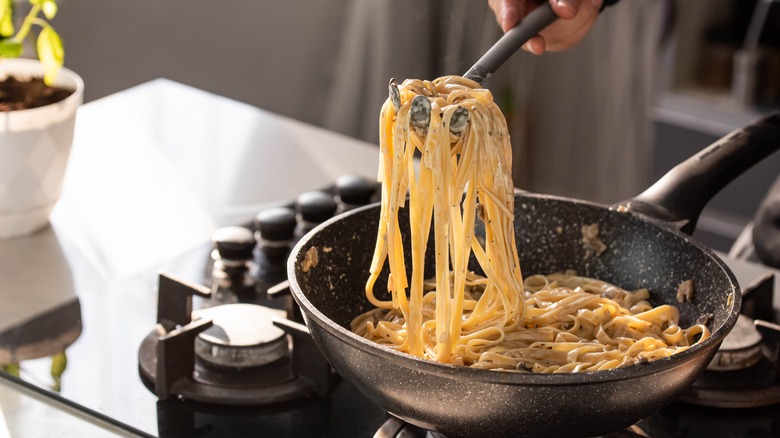The Pasta Water Hack That Will Seriously Elevate Homemade Bread
No one likes spending hours making bread just to have it turn out dense and heavy. There's nothing worse than slaving away in a hot kitchen only to be disappointed in the final outcome. Luckily, English food writer and TV cook Nigella Lawson has some useful advice for home bakers. After cooking potatoes or pasta, save that water for later use. When baking bread, Lawson recommends bringing out that saved pasta water in order to "help the bread's texture and rise," she tweeted. Problem solved!
When you're ready to make your bread dough, simply swap out the regular water required in your recipe with the pasta water. The starch in the pasta (or potato) water helps the dough rise and makes the bread softer and more pillowy in texture. Lawson followed her pasta water and bread-baking advice with another tweet to remind bakers to make adjustments in their bread recipes based on the salt level of the water used. If the water is extra salty, make sure to dilute it with fresh water and leave out the salt in the recipe, she advised.
Why does the starchy water help bread rise?
In order to understand the role of starch in making bread, it helps to understand some of the science behind bread baking. The four main ingredients in bread are wheat flour, water, salt, and yeast. Wheat flour contains about 70 percent starch, a carbohydrate found in many grains and vegetables like corn, peas, rice, oats, potatoes, and beans. During the bread-making process, starch interacts with gluten (a protein found in grains like wheat, barley, and rye) to make the bread set, which prevents it from caving in when baked. Starch also releases sugar which interacts with the yeast, in turn helping the bread to rise.
To sum it up, starch, gluten, and yeast all work together as one mighty bread-baking team. So the idea behind adding pasta water to your bread recipe is that the starch will feed the yeast, therefore making the dough rise faster. Starch is also highly absorbant; it retains water which can make bread softer by increasing its moisture content.
Other uses for pasta water
There are plenty of other uses for leftover pasta water beyond bread making, with one of the most common being used as a binder or thickening agent for pasta sauce. The starchy water can be combined with butter or olive oil and parmesan, for instance, to make a creamy alfredo sauce for your noodles. Or, mix it into a simple spaghetti carbonara sauce with eggs, bacon, olive oil, and parmesan. The starch in the pasta water helps thicken the sauce and makes it stick better to the noodles.
You can also create a flavorful soup base by adding it to chicken, vegetable, or beef broth or use it to soak your legumes overnight in order to soften them and help them cook faster.
If you want to save your leftover pasta water to take advantage of its usefulness in future recipes, you can keep it for a couple of days in a sealed container in your fridge or pour it into ice cube trays and freeze it. When you need it, pop out a cloudy cube or two and toss it in the pot (or let it thaw before adding it to your recipe).


